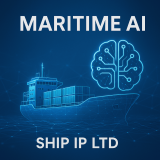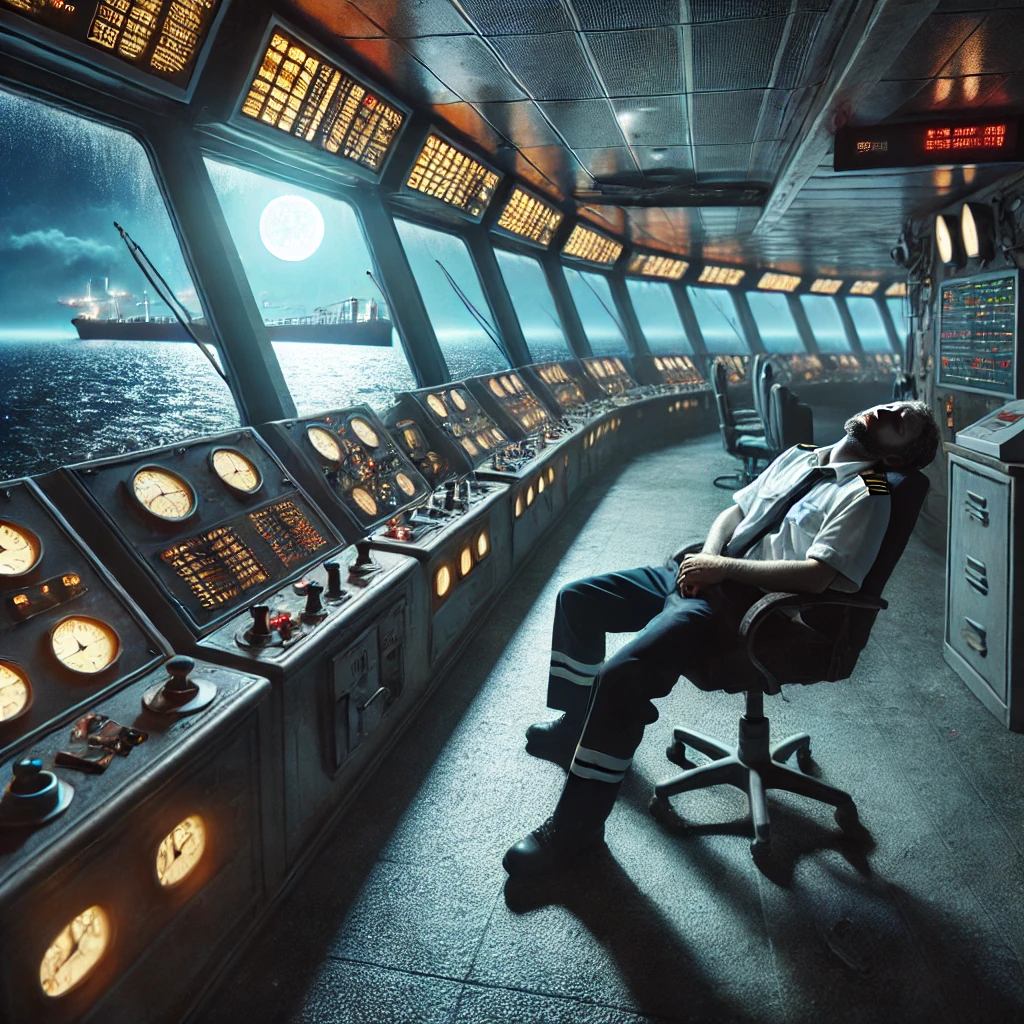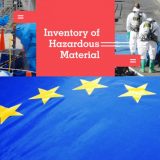The World Shipping Council issued an eye-opening report last July. What seemed like a steady stream of vessel fires, capesizes and container losses was in fact a small drop in the global ocean shipping bucket. A WSC study found a tiny fraction, about .0006%, of the roughly 226 million containers shipped on the world’s oceans each year were lost.
WSC reported on average only 1,382 containers were lost at sea per year between 2018 and 2019. So what’s going on? Between Nov. 30 and Jan. 31, more than 2,675 containers were lost in five incidents at sea. That’s almost double the annual average in just a two-month period.
MSC Aries
Most of the accidents have occurred in the North Pacific, including the most recent, the reported loss of 41 containers from the MSC Aries last Friday. All 41 containers lost overboard reportedly were empties being moved back to China to be refilled.
An MSC spokesperson did not confirm the number of containers lost but did tell American Shipper, “No cargo went overboard, according to preliminary reports from the vessel.”
The Aries is deployed on MSC’s Sequoia service, with a port rotation of the Port of Long Beach in California and Ningbo and Shanghai, China.
The ship “met with heavy weather while en route from Long Beach to Ningbo, impacting a limited number of empty containers,” the MSC spokesperson said.
The spokesperson said the MSC Aries berthed Thursday at the Port of Ningbo, “where a survey is taking place to assess the status of any containers damaged on board and any further action to take. We expect the vessel to resume service soon after the survey.”
Built in only 2020, according to VesselFinder, the container ship can carry a reported 14,300 twenty-foot equivalent units (TEUs).
Maersk Essen
The Maersk Essen lost 750 containers Jan. 16 while sailing from Xiamen, China, to the Port of Los Angeles. Maersk said the 13,100-TEU Essen “experienced heavy seas during her North Pacific crossing.”
The Essen changed course after the loss of the containers and sailed for the Port of Lazaro Cardenas in Mexico, where it berthed last Saturday.
Representatives from W K Webster, which describes itself as “the world’s leading service provider in the settlement of cargo claims,” are in Lazaro Cardenas and providing updates.
“Our team of surveyors are in place at Lazaro Cardenas to undertake surveys as cargo operations proceed and to ascertain the status of all the containers we represent. We are liaising with representatives of the vessel locally to agree to a protocol for the inspection of containers and the procedures for reloading containers, cross-stuffing cargoes into replacement containers and, in some cases, for the probable disposal/salvage sale of cargo considered to be a total loss,” W K Webster said.
It said the surveyors also were studying drone footage of the Maersk Essen as it approached Lazaro Cardenas. W K Webster said the footage was removed from its website at Maersk’s request.
“Following cargo operations at Lazaro Cardenas, the most likely scenario is that containers discharged ashore — or transloaded — will be reloaded to the vessel for on-carriage to Los Angeles as originally intended,” one update said. “Due to significant port congestion at Los Angeles/Long Beach, Maersk has not ruled out transshipping to alternative vessels or possibly rerouting containers by rail. Whichever plan is ultimately adopted, it is clear that there will be significant delay to cargoes reaching their final destinations.”
The operations in Lazaro Cardenas could take several weeks “given the complexity and dangers involved,” W K Webster noted.
“We continue to liaise with the vessel’s representatives regarding the status of the containers to accurately determine which containers were lost overboard and the stowage positions of those remaining on board,” it said.
A Maersk spokesperson told American Shipper the Essen is “undergoing standard discharge of damaged containers and weather-related repairs” at the Mexican port.
He said the Essen is estimated to sail from Lazaro Cardenas for the Port of LA between Feb. 12 and 16, “resuming regular TP6 string scheduled calls.” The TP6 service connects Asia and North America, with the only U.S. call at the Port of LA.
ONE Apus
In one of the worst cases of cargo losses on record, the ONE Apus lost 1,816 containers about 1,600 nautical miles northwest of Hawaii after reportedly sailing into a severe storm Nov. 30.
The Apus, which had been en route to the Port of Long Beach, turned around and sailed for the Port of Kobe in Japan, arriving there Dec. 8.
W K Webster also has a crew in Kobe and said that as of Wednesday, 638 containers had been discharged from the Apus, which has a carrying capacity of 14,052 TEUs.
“Progress is still relatively slow, although the rate of discharge does appear to be increasing slightly as the most severely damaged containers are discharged, leaving others that are more easily handled to be removed. It is still likely to be a few more weeks before discharge is completed and necessary repairs made to the vessel,” W K Webster said.
“Details of the status of each container still does not include details of those containers thought to be lost overboard as a result of the incident. It is presently unclear whether this will be revealed by a process of elimination as the discharge operation at Kobe concludes or whether earlier information will be made available,” it continued. “A declaration of general average now seems very unlikely. We are pressing [ONE] to formally confirm this so that this issue can be finally put to rest and our clients’ concerns allayed.”
General average basically requires shippers to contribute to the expenditures made to preserve a ship and its cargo. Most cargo insurance policies protect a shipper’s merchandise from physical loss or damage and cover general average losses.
What caused such a massive number of containers to fall from the Apus, which made its maiden voyage in the spring of 2019, reportedly has not yet been determined.
“Investigations into the cause of the incident continue, but a physical attendance by our appointed expert has been delayed as a result of the owner’s current refusal to grant access to the vessel, citing safety issues,” W K Webster said this week. “We still intend this inspection to take place in due course when permitted, including an inspection of all relevant physical evidence that [ONE has] agreed to preserve.”
A reply to American Shipper’s email to ONE for additional information simply said, “Discharging of damaged containers is still ongoing at Kobe. Kindly understand we disclose details only to the customers.”
The loss of 1,816 containers in a single incident certainly jumps out. But even with the case of the Apus subtracted, the number of containers lost in the last two months is by a far cry outpacing the annual average.
Ever Liberal
Taiwanese carrier Evergreen Marine’s Ever Liberal lost a reported 36 containers after encountering strong winds in the Pacific about 20 nautical miles off the coast of Kyushu, Japan, on Dec. 31. An additional 21 containers reportedly fell onto the deck.
The Ever Liberal had sailed from Busan, South Korea, bound for the Port of LA. Evergreen told the Taiwan News that the container ship diverted to Taipei to survey the damage.
According to VesselFinder, the Ever Liberal arrived at the Port of LA last Sunday and was due to berth in Oakland, California, on Thursday.
Built in 2014, the Ever Liberal has a capacity of 8,452 TEUs.
E.R. Tianping
Israeli carrier ZIM reportedly lost 76 containers last month from the chartered ship E.R. Tianping.
The incident also occurred in the Pacific as the container ship was making its way from South Korea to North America.
The 2006-built Tianping did visit the ports of Vancouver and Seattle at the end of January. It now is sailing for Busan, with an estimated arrival next Wednesday.
ZIM did not respond to American Shipper’s requests for comment.
Giulia 1
While no cargo reportedly was lost, rough seas are being blamed for the death of a crew member from the bulk carrier Giulia 1 off the coast of Nova Scotia, Canada, last Saturday.
According to reports, the Giulia 1 was about 320 nautical miles southeast of Nova Scotia when it was hit by the wave. One crew member, said to be a 30-year-old Filipino man, was killed and three others reportedly suffered injuries.
The bulk carrier reportedly had sailed from Norfolk, Virginia, and was bound for Africa when the incident occurred. The Giulia then diverted to the Port of Halifax, where it arrived Sunday.
Transport Canada told American Shipper that it inspected the vessel Wednesday and “issued a deficiency notice under the Maritime Labour Convention and the International Safety Management Code. The vessel will remain alongside at the Port of Halifax pending rectification of all items to the satisfaction of port state control.”
Transport Canada did not say what those deficiencies were.
Source: Freight Waves
Source: hellenicshippingnews





